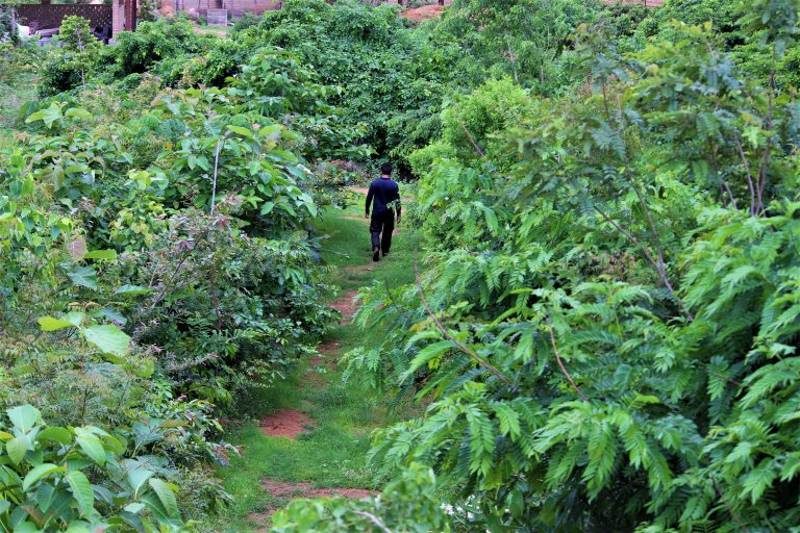Most of the world we live in today was once forest, our natural habitat for millions of years.
Now surrounded by cities and agriculture, humans are no longer living in their "natural" habitat, argues a forest-building engineer named Shubhendu Sharma. But we can recreate little chunks of that habitat in just ten years our own backyards, workplaces and public spaces, he explains in the Ted Talk below:
Shubhendu Sharma was an industrial engineer for Toyota hired to offset some of the carbon emissions of the company's factories. His solution was to plant mini forests right next door. Since then his company Afforest has helped "build" 75 such forests in 25 cities across the world.
Sharma's forests grow 10 times faster, are 100 times more biodiverse and 30 times more lush than typical reforestation projects.
He used his model for manufacturing as many cars as possible per square feet of factory space and applied it to growing trees.
His methods enable him to grow a 300-tree forest in the space of 6 parked cars.
Amazingly, the cost of growing a forest is roughly the same as an iPhone.
"We discovered every single element needed to make a forest is right around us," Sharma said. "All we have to do is bring these elements together and let nature take over."
"We start with soil. We touch, feel and even taste it to identify what properties it lacks."
Next, his company mixes in local biomass - compost, manure, etc. - to help compacted soil become more porous and allow water to seep in.
"If the soil is lacking nutrients, we don't just add nutrients directly to the soil - that's the industrial way," he says.
Instead, he adds microorganisms that feed on the biomass and convert it into more bioavailable nutrients.
"As the number of microorganisms grows, the soil starts breathing again," he says. "It becomes alive."
When planning a mini forest, Sharma's company starts by determining which tree species were native to the area before human intervention.
Then they decide whether they want a fruit forest, a flower forest, a forest that attracts a lot of birds or bees, or an evergreen forest, and chose different species for each layer - canopy, tree layer, sub tree layer and shrubs.
Then, they collect the seeds, germinate the saplings, and plant them in a tight-knit pattern that intersperses the various species.
Next, they spread a thick layer of mulch to hold in moisture during the summer and protect the soil from frost during the winter. This makes for extremely soft soil, allowing roots to penetrate and grow quickly.
Within 3 months the roots reach one meter deep and form a mesh holding the soil together. Microbes and fungi make nutrients available to the roots.
The forest is watered and weeded for two to three years, but as the forest grows it blocks the sunlight and weeds stop growing.
Shortly after this, the canopy becomes so dense, the forest retains every drop of water, eliminating the need for watering.

Urban forest
The forest floor remains moist and dark, enabling leaves to decay quickly and become food for the soil. As more and more leaves fall, creating more and more food for the soil, the forest starts growing exponentially, Sharma says.
"If the tree species were planted independently, they wouldn't grow so fast," he says. "This is how we create a hundred year old forest in just ten years."
For more details on forest-scaping your yard, check out Sharma's website Afforestt.com.
Comment: Check out this 2016 TED Talk by Sharma: